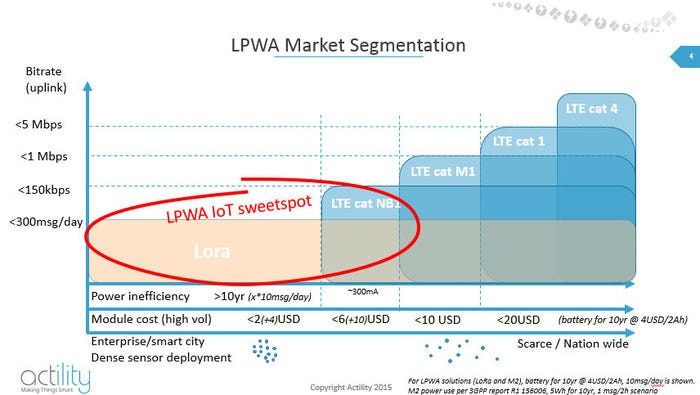The concept of machines wirelessly talking to each other is no longer just a metaphor as the first instances of voice being carried over an IoT technology are announced.
July 3, 2017

The concept of machines wirelessly talking to each other is no longer just a metaphor as the first instances of voice being carried over an IoT technology are announced.
The LPWAN tech in question is LTE Cat-M1, otherwise known as LTE-M and eMTC, which until now had been treated as data-only. But just as with the main flavour of LTE, people figured it would be nice to have a voice option too.
Ericsson and Qualcomm seem to have been the main drivers behind this technology, partnering with Verizon and China Unicom to demo VoLTEM (is it will hence-forth be known in this publication) over live networks in the US and China respectively.
Verizon announced what it claimed was the first successful live over-the-air VoLTE call on a Cat-M1 network late last week. “Extending VoLTE technology on Verizon’s nationwide LTE Cat M1 network is the natural next step in the evolution of IoT,” said Rosemary McNally, VP for corporate technology at Verizon. “By proving that voice services can be delivered on a production LTE Cat M1 network, we’re paving the way for new types of IoT applications and services.”
Apart from the thrill of doing something for the first time it’s not immediately obvious why we would want to enable voice over a technology that is designed to enable machines to communicate with each other. At the Verizon launch Ericsson offered some clues.
“We are very pleased to have successfully demonstrated live VoLTE calls over Verizon’s commercial LTE Cat M1 network, together with Qualcomm Technologies,” said Eric Parsons, head of Product Line 4G and RAN Mobile Broadband at Ericsson. “The IoT space offers new revenue-generating services for operators and adding voice capabilities to IoT devices takes use cases such as alarm panels and medical alert systems to the next level of functionality.”
The China Unicom demo put more of an emphasis on use-cases, specifically the kinds of emergency communications systems alluded to above. For things like fire alarm trigger panels and GPS emergency tracking devices VoLTEM is thought to provide a good combination of coverage, long battery life and the ability for the striken person to communicate with the emergency services.
“We launched NB-IoT on a pre-commercial basis on May 12 in Shanghai,” said Guanglu Shao, Executive Director and Senior Vice President, China Unicom. “This cooperation on eMTC with Ericsson and Qualcomm is a new venture intended to boost social intelligence and the Internet of Everything through wide cooperation and the construction of leading networks.”
LTE-M is considered the most immediately usable of the emerging LPWAN it has greater throughput than NB-IoT (see Actility chart below), which allows things like voice, but modules are more expensive power-hungry, making it less useful for large scale embedded deployments.

About the Author(s)
You May Also Like








.png?width=300&auto=webp&quality=80&disable=upscale)


_1.jpg?width=300&auto=webp&quality=80&disable=upscale)


.png?width=800&auto=webp&quality=80&disable=upscale)